Day 1
The feeder vehicles brought my passengers in ready to leave for 7am. It was nice to see so many familiar faces. We had a very straight forward day today as far as I was concerned. I had been given more than enough time to make a comfortable journey to Holyhead where we were booked on the 1350 hrs sailing of Irish Ferries,Ulysses. We were loaded on to the ship early and I had finished my lunch before we had sailed out of Port. I spent the rest of the crossing enjoying the peace and comfort of a cabin. And yes, it would have been rude to not make use of the bunk and have a little snooze!
We arrived in the port of Dublin at 1730 hrs and travelled the short journey to our overnight stay, the Johnstown House Hotel, Enfield, County Meath. Well! What a hotel! I do not have one bad thing to say about any aspect of our stay in this hotel.

The rooms were large, bright and airy with large bathrooms and they are all the same so there is no chance of getting a bad room. Our evening meal was scrumptuous. We had 6 choices of each course, every dish that was served was obviously someone taking pride in their work. All the staff were extremely helpful, professional and efficient. There was not one thing that we had to chase up. It was an absolute pleasure to stay at this hotel and the bar has been raised for our hotel for the main stay of our tour!
Day 2
We had a nice leisurely start this morning after a lovely breakfast and it was going to be another easy day for me. We were heading to Strokestown Park, House and Garden, and Famine Museum, County Roscommon, which was only an hour and a half journey.
When we arrived, we were met by our guide, James, who gave a quick welcome to the park and gave us time for a quick comfort break before our introductory guided tour of the Famine Museum. And it WAS only an introduction. A very brief summary as we walked through each room. There was an awful lot of reading material throughout the museum that we weren't given time to look at. We were being rushed through and I soon realised why.
There were a lot of coach groups visiting here this morning and the house is quite small. Each group had a time slot for their guide around the house which was why we were rushed through the museum, to make the house at our allocated time.
The Great Irish famine of the 1840′s is now regarded as the single greatest social disaster of 19th century Europe. Between 1845 and 1850, when blight devastated the potato crop, in excess of two million people – almost one-quarter of the entire population – either died or emigrated.
The Famine Museum is located in the original Stable Yards of Strokestown Park House. It was designed to commemorate the history of the famine of Ireland and in some way to balance the history of the 'Big House'.
Whereas the landlord class had the resources to leave an indelible mark on the landscape, the Irish tenants lived in poverty and nothing of a physical nature has survived to commemorate their lives. The Famine Museum uses the unique documents that were discovered in the estate office, dealing with the administration of the estate during the tenure of the Mahon family. This collection includes many haunting pleas from starving tenants on the estate and the response they received.
The Museum also has a strong educational focus and seeks to create a greater awareness of the horrors of contemporary famine by demonstrating the link between the causes of the Great Irish Famine of the 1840′s and the ongoing spectacle of famine in the developing world today. The Famine Museum was opened in 1994 by the then President of Ireland, Mary Robinson, and she said 'More than anything else, this Famine Museum shows us that history is not about power or triumph nearly so often as it is about suffering and vulnerability'.
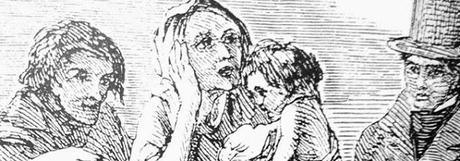
Strokestown Park was built by Thomas Mahon MP (1701-1782) on lands which had been granted to his grandfather, Nicholas, in the latter half of the 17th century for his support in the British colonial campaign. It was the family home of the Mahon family until 1979 when the house, in an advanced state of disrepair, along with what remained of the estate, was purchased by a local company, Westward Garage, who needed some extra land to expand their business.
Their initial intention was to keep the few acres they needed to expand their business and to sell on the remainder of the estate to recoup their finances. At that stage Westward was a young emerging company, with limited cash resources.
However, when they spent some time in the house and saw what was there, they decided that Strokestown Park was far too important from a heritage point of view to risk losing it. They negotiated a deal with the Mahon family to ensure that virtually all of the original furnishings would remain at Strokestown Park. They also pleaded with the family to leave behind the documents that remained in the estate office. By doing so they had ensured the salvation of a huge part of the heritage of County Roscommon, particularly relating to the great famine of Ireland.
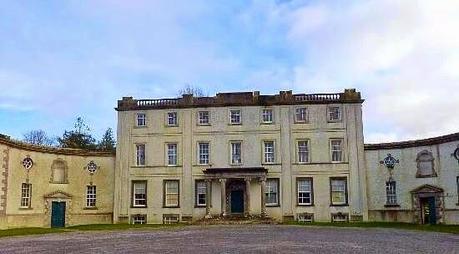
The house was opened to the public in 1987 and is unique in that it affords visitors the opportunity to browse through the public rooms on professionally guided tours, surrounded by the original furnishings of the house. The House is unchanged from the time when the Mahons lived there, as evidenced by photographs which can be seen in the house.
Personally, I thought the inside of the house was an absolute disgrace. There were holes in the furniture where the mice had got to it. The carpets were all thread bare from having so many people walking over them and the excuse for leaving them was that they were original. The same with the curtains. Every time we were taken into a room I was asked to close the door behind us and in one room, the door knob fell off in my hand! The photographer who did the promo shots on the inside of this house was very good because the place is nothing like the advertisements suggest. The whole house was dirty and smelly and an accident waiting to happen!
The famine museum is well worth a visit but do it self guided so you can take as much time as you need. I don't recommend visiting the house, nor the garden, unless you like looking at weeds! It seems to me that the owners have no interest or enthusiasm to restore the property to what it was and that so long as it funds itself, that is good enough. Quite disappointing. The cafe however, was very good!We stayed long enough for lunch and to revisit the museum before we were back on the coach and making our way to Westport and the Castle Court Hotel, which would be our base for the next 4 nights.
I had been warned about the access and parking for the coach at this hotel but I wasn't expecting it to be quite so ridiculous! I can see it will be fun and games every day trying to get in and parked.
I had a nice room in this hotel and the food was good but it is no comparison to our hotel last night! Everyone settled in quickly and enjoyed dinner before most of our group moved to the bar for the live music. Unfortunately it wasn't traditional Irish, it was American folk, but it still created a good atmosphere.
Day 3
Today is the day I have been looking forward to. We have a day of scenic driving around Connemara and Joyce Country with a visit to Kylemore Abbey and a short time in Cong. We had a lot to fit in today but we had the weather on our side, not a cloud in the sky. The views today should be outstanding.
We left the hotel and straight away headed for the Connemara National Park and drove the Connemara Loop, County Galway, which is part of the Wild Atlantic Way.
"Follow the Loop and be taken on a journey through an ever changing landscape of majestic mountains, spectacular beaches, the wild Atlantic, mist covered lakes, pre-historic bogs and shady glens. A landscape peppered with quaint but lively villages where all the convenience of the modern day is available alongside an opportunity to step back in time to a more relaxed and friendly era."
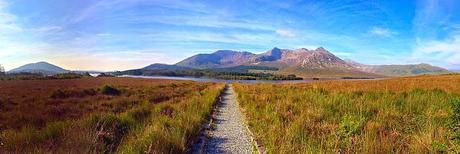
We drove around the loop in a clockwise direction in order to arrive at Kylemore Abbey at an appropriate time to also have lunch.
Kylemore Abbey is a Benedictinemonastery founded in 1920 on the grounds of Kylemore Castle. The abbey was founded forBenedictine Nuns who fled Belgium in World War I.
Kylemore Castle was built as a private home for the family of Mitchell Henry, a wealthy doctor from London whose family was involved in textile manufacturing inManchester, England. He moved to Ireland when he and his wife Margaret purchased the land around the Abbey. He became a politician, becoming an MP for County Galway from 1871 to 1885. Construction first began in 1867, and took one hundred men four years to complete. There were 33 bedrooms, 4 bathrooms, 4 sitting rooms, a ballroom, billiard room, library, study, school room, smoking room, gun room and various offices and domestic staff residences for the butler, cook, housekeeper and other servants. Other buildings include a Gothic cathedral and family mausoleum containing the bodies of Margaret Henry, Mitchell Henry and a great grand-nephew.The Abbey remained in Henry's estate after he returned to England. The castle was sold to the Duke and Duchess of Manchester in 1909, who resided there for several years before being forced to sell the house and grounds because of gambling debts. In 1920 the Irish Benedictine Nuns purchased the Abbey castle and lands after they were forced to flee Ypres, Belgium during World War I. The nuns, who had been based in Ypres for several hundred years, had been bombed out of their Abbey during World War I. The nuns continued to offer education to Catholic girls, opening an international boarding school and establishing a day school for local girls. They were forced to close the school in June 2010.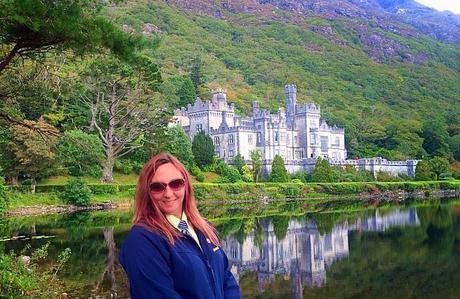
The Estate includes large walled Victorian Gardens. Since the 1970s these have been open for public tours and 'nature' walks. The Benedictine community has restored the Abbey's gardens and Cathedral with donations and local artisans in order to be a self-sustaining estate. Unfortunately, I ran out of time before seeing everything, still so much more to see today!
We had stayed here for 2 1/2hrs before more scenic driving this afternoon through Joyce Country. Joyce Country lies west of the Lough Mask area, beyond the isthmus; a hilly region in the north of County Galway, extending into the southern part of County Mayo, traversed by green valleys and lonely roads which takes its name from a Welsh family who settled here in the 13th century during the reign of Edward I. Many people with the name Joyce still live there. The writer James Joyce carries the family name although he was born in Dublin in 1882.
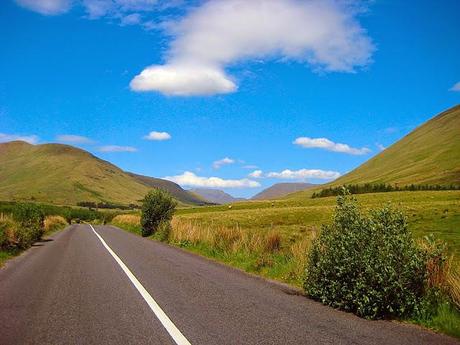
There exists a Joyce Country Mountain and Lake District which covers the area south of Lough Mask, including the communities from Clonbur to Maam, Cloghbrack and Finney. Some sources include the balance of the isthmus, extending the region to Cong, Cross and The Neale.
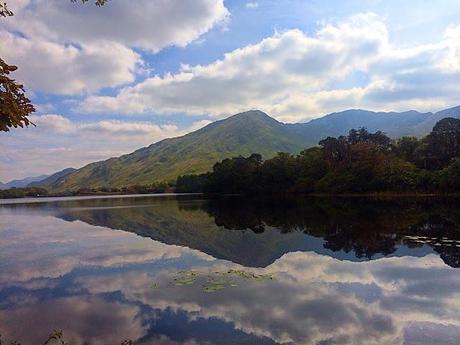
We stopped in the little town of Cong, famous for the film 'The Quiet Man'. Cong is situated on an island formed by a number of streams that surround it on all sides. Cong is located on the isthmus connecting Loughs Corrib and Mask, near the towns of Headford and Ballinrobe and the villages of Neale and Cross
Cong is known for its underground streams that connect Lough Corrib with Lough Maskto the north. It was also the home ofSir William Wilde, historian and father to prominent playwright, novelist, poet, and short story writerOscar Wilde

Cong is the home of Ashford Castle, one of Ireland's finest hotels, converted from a Victorian faux lakeside castle, built by the Guinness family and is a tourist attraction in its own right. Cong also has a fine example of a ruined medieval abbey, Cong Abbey, whereRory O'Connor, the last High King of Ireland, is buried. It also is the origin ofCeltic artin the form of a metal cross shrine called theCross of Cong. The 'Cross of Cong' is now held in theNational Museum of Ireland, Dublin. There is a High Cross in the village.
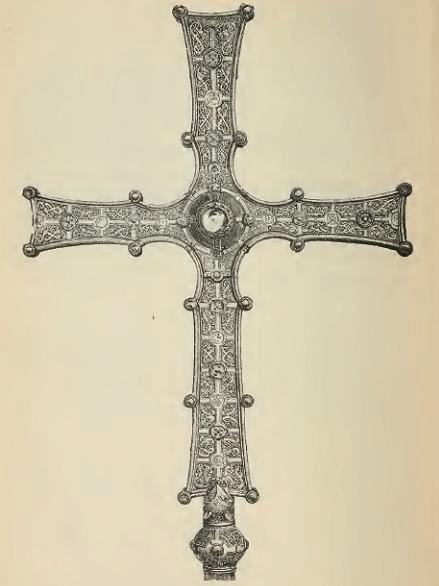
Cong was the filming location for John Ford's1952 Oscar-winning film,The Quiet Man, featuring John Wayne,Maureen O'HaraandBarry Fitzgerald. Much of the movie was filmed on the grounds of Ashford Castle. The town and castle area remain little changed since 1952, and Cong's connection with the movie make it a tourist attraction. (The movie is still celebrated by the local "Quiet Man Fan Club").
From Cong we travelled directly back to our hotel after a long but thoroughly enjoyable, outstandingly beautiful day.
Day 4
Today is a day off for me and a free day in Westport. I was hoping to get on a boat trip today but the tides are wrong and there is nothing going until much later in the day which I'm a little disappointed about missing. I still went for a walk down to Westport Quay, following the Greenway to get there, before walking back through Westport town. It made my legs ache!
The earliest settled habitation of the Westport area was approximately 5000years ago which is reflected in the many megalithic monuments found on the Clew Bay Archeological Trail. In the 16th Century Westport or Cathair na Mart as it is known in the Irish language was an important stronghold for the O Malley Clan. An infamous Pirate Queen called Grace O Malley held control of the fortress in Westport as well as many other sites along the shores of Clew Bay.
In the 17th century the Browne Family moved to Westport and built a home on the site of the O Malley Fortress. In 1730 they employed a famous German architect called Mr. Richard Cassels to design the magnificent building of Westport House and interestingly the dungeons of the old O Malley fortress can still be seen on a visit to Westport House.
The village of Westport originally consisted of thatched cabins and was situated on the front lawn of Westport House with a high street and little alleys leading down to the Carrowbeg River. In the mid 18th century Sir John Browne decided to relocate the village 1500m inland to its current position and contracted the architect William Leeson to plan the town. A proposal announcing the new town of Westport appeared in the Dublin Journal, March 1767.
In 1800 Sir John Denis Browne, Lord Sligo embarked on the ambitious plans of developing the Mall on both sides of the Carrowbeg River. It consists of 400m of tree lined boulevards, with two cascades and had three crossings of stone arched bridges. The buildings on both sides of the Mall were built in wonderful Georgian character and many remain intact to this day.
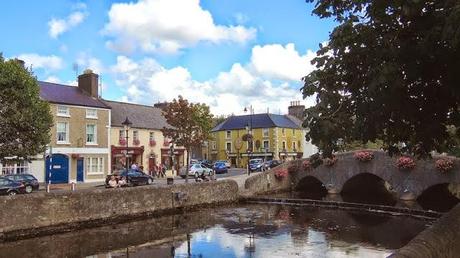
Westport is the third largest town in Mayo with an urban population of 5,000. It hosts a remarkable natural and built environment combined with a vibrant, friendly resident population which enables the delivery of quality tourism products. The site of the town offers visitors an opportunity to experience a well maintained urban setting on the banks of the beautiful Carrabawn River in addition to a bustling Quay area on the shores of Clew Bay. The topography and biodiversity of the Westport’s environs provides for spectacular scenery which enables visitors to the area to capture a real sense of the heritage and landscape. The town has won numerous awards which justly reflect the efforts of local community groups.
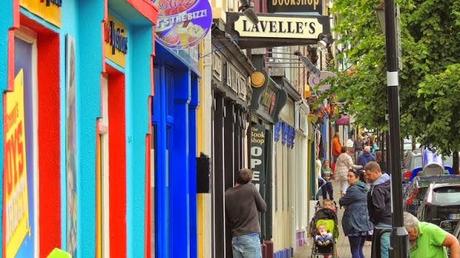
At lunch time I indulged myself with a glass of the black stuff! In the afternoon I took advantage of the Spa and Leisure facilities at the hotel and lounged in the jacuzzi for a while!

Day 5
Today we have a local guide joining us on board the coach to take us around Achill Island. We had another day of beautiful weather and breathtaking scenery.
Achill has a long history of human settlement and there is evidence that Achill was inhabited as many as 5,000 years ago. Megalithic tombs testifying to this can be seen at Slievemore and there is a signposted walk to one of these tombs nearby McDowell's Hotel. The remains of promontory forts from the Iron Age have been found along the Atlantic Drive and on Achill Beg Island.
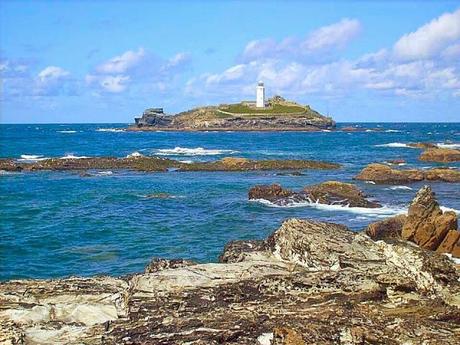
We spent the morning on the Atlantic Drive, also part of the Wild Atlantic Way. I just can't put into words how amazingly stunning the scenery was.
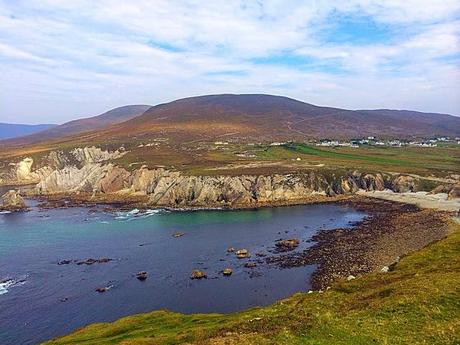
Our guide had booked us into a pub for lunch where we were all very well fed before spending the afternoon driving out to Keem Beach where we literally came to the end of the road.
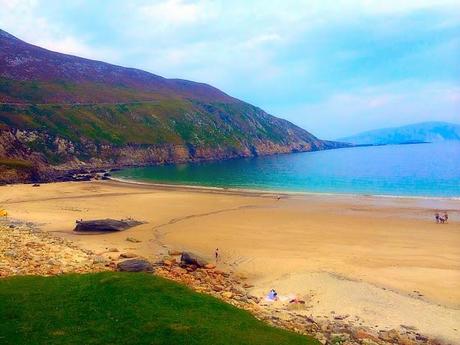
After leaving the beach, one of our passengers requested that we visit the deserted village. Close by Dugort, at the base of Slievemore mountain lies the Deserted Village. The village is divided into three areas called Tuar, Tuar Riabach and Faiche, and there are approximately 80 houses in the village.
The atmosphere of the Deserted Village is unique; it's remoteness; a feeling of almost intruding on those who lived there; a sense of the frugality of life in such a place and time and the overall air of mystery; who were they, why did they settle here, how did they survive and why did they leave?
The houses were built of unmortared stone, which means that no cement or mortar was used to hold the stones together. Each house consisted of just one room and this room was used as kitchen, living room, bedroom and even stable. While one or two houses may have had a small stable built on to the end of the house, most families had to share their house with the cows and other livestock, who would be brought into the house at night and tied at one end. Inside the house, a shallow channel or drain in the floor would lead in to a manure pit outside the house.
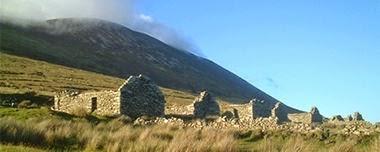
It had been another fantastic day today. We weren't restricted by timings anywhere and just spent as much or as little time that we wanted. County Mayo and Connemara are my new favourite areas of Ireland.
Day 6
This morning we are leaving Westport. We stopped for a coffee in the town of Longford before today's visit at Belvedere House.
Belvedere estate today is a very important example of cultural built heritage that has been transformed into a tourism asset of national importance for the region. Currently attracting over 160'000 visitors a year the estate is a multi faceted tourism/leisure site with a diverse range of uses throughout the year.A day visitor to Belvedere gets to explore the restored Belvedere House, Victorian Walled Garden and rolling parkland with it's numerous follies. Belvedere can be a place of quiet contemplation and also a bustling, vibrant, colourful place with the many events held here, it is a place resonant of the past but relevant to the future.The historic role of the Big House in Ireland was one of dominance and exclusion. The Houses were hidden away behind high walls designed to keep people out and were surrounded by idyllic landscaped grounds for the enjoyment of the few. Now days a big house such as Belvedere (stature not size) in public ownership the aim is for inclusion not exclusion. As well as normal tourism business Belvedere works closely with providing access to large numbers of community based projects, sports clubs, art groups and local initiatives.
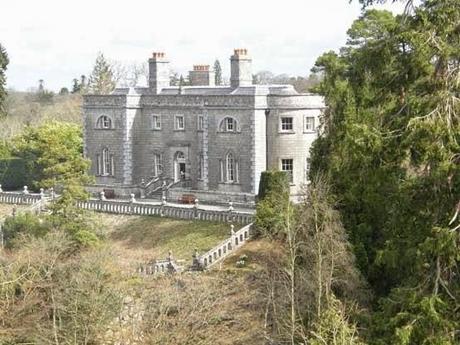
The house was initially built by Robert Rochfort as a retreat, having incarcerated his wife in their previous home at Gaulstown, for an alleged affair with his brother Arthur. Arthur was later put on trial and fined £20,000 which he could not pay. Arthur spent 18 years in debtors' prison in Dublin but was released upon Robert's death. Robert built the Jealous Wall after falling out with his brother George, who lived on the adjacent estate at Tudenham. His wife was only released on his death in 1774, after 31 years of being locked away.The estate passed to his son George Augustus Rochfort, the 2nd Earl. He was MP forWestmeathfrom 1761 to 1776 andHigh Sheriff of Westmeath for 1762. He left for England in 1798 and died in 1814. When his widow died in 1828, Belvedere passed to her grandson Brinsley Butler, 4th Earl of Lanesborough. He rarely visited Belvedere and it was subsequently inherited on his death by his cousin Charles Brinsley Marlay in 1847.Charles moved into the house and during his time there was responsible for the alteration of the Diocletian windows on the upper façade and for the addition of the terracing. He commissioned Ninian Niven, curator of the Botanic Gardens in Glasnevin, to draw up plans for the Victorian walled garden.In the period following the second world war Charles Howard-Bury, a soldier and mountaineer, restored the house and gardens. He never married and on his death in 1963 the estate was inherited by Rex Beaumont. Rex had been Howard-Bury's friend and companion for 30 years and sold the estate to Westmeath County Council in 1982. Following a multi-million pound restoration the house and gardens have been opened to visitors.We left here, heading for our overnight hotel, The Stillorgan Park Hotel. Another very nice, comfortable hotel which serves very good food. One thing with coming to Ireland is that you will never go hungry. There is always plenty of food!Day 7
An early start this morning for our early morning sailing from Dublin to Holyhead. We left the hotel at 0630 and pointed out a few of the sights as we drove across the centre of the city to the port. It was another beautiful morning and it looked like we'd be having a smooth crossing.
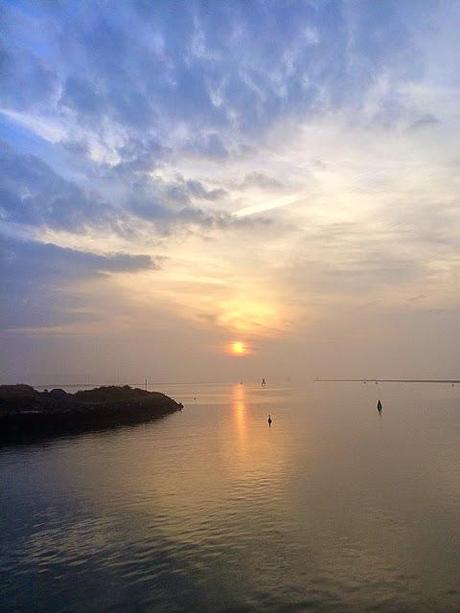
We had breakfast booked for the whole group on the ferry. Once again I had finished eating before we left port and I went straight back to bed! After a couple of hours sleep and a shower we were back in Holyhead and heading for home.
I have really enjoyed this week and would love to return to the west of Ireland. Another successful tour delivered!

